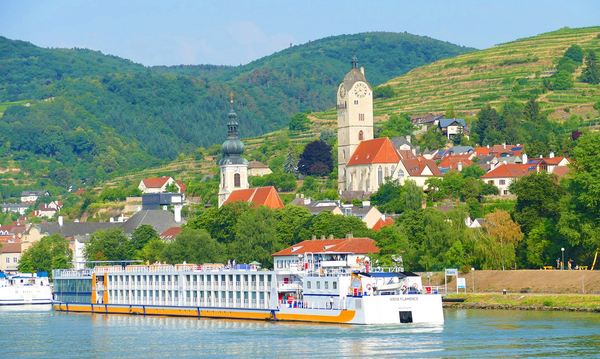
[아츠앤컬쳐] 다뉴브강은 유럽에서 두 번째로 길고 오스트리아의 가장 중요한 수로로 역사적, 매혹적인 장소가 많다. 서북쪽 독일 파사우에서 오스트리아로 들어서며 다뉴브강 260km의 여정이 시작된다. 다뉴브강을 즐기는 방법 중 하나는 자전거이며, 다른 방법은 정기 운항하는 배를 타는 것이다.
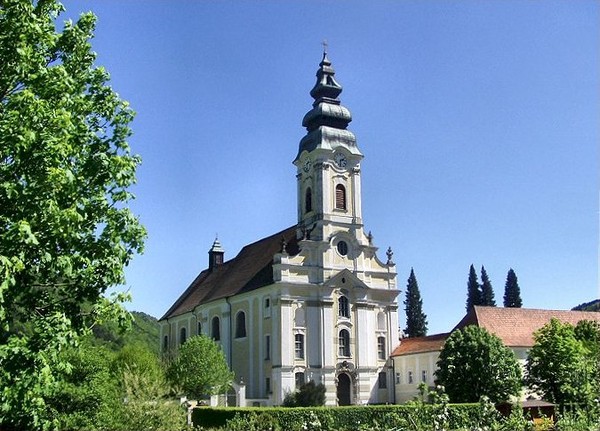
첫 번째 흥미로운 장소는 아름다운 로코코교회와 그림 같은 정원이 있는 엥겔스첼수도원이고, 이어 놀라운 랜드마크인 쉴레게너 쉴링게로 강이 180도씩 두 차례 U턴하여 흐르는 지점이 나온다.
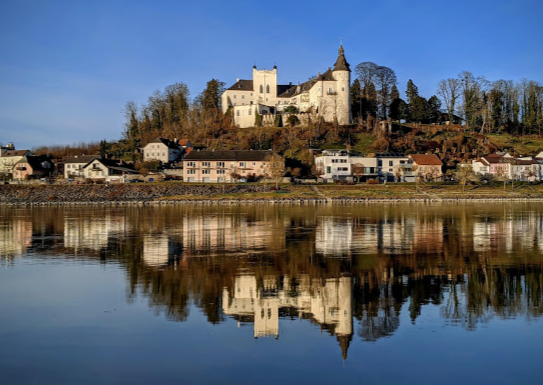
그 다음으로 매력적인 16세기의 시장 마을 바로 위에서 강을 내려다보는 오텐스하임 성이 있는데, 북부오스트리아의 수도 린츠에서도 멀지 않다. 린츠에는 중앙광장과 랜드스트라세, 캐슬 박물관, 식물원, 시민정원의 뮤지컬극장, 렌토스 박물관, 아르스 일렉트로니카 센터 그리고 도시 안에 푀스트링베어크산이 있다. 유럽에서 가장 가파른 접착철도인 푀스트링베어크반(기차)를 타고 산에 올라 순례성당을 방문한 후 아이들과 드래곤 익스프레스를 타고 그로텐반 정령 방문을 통해 동굴 속 난쟁이, 숲속 동물, 동화 세계로 갈 수 있다.
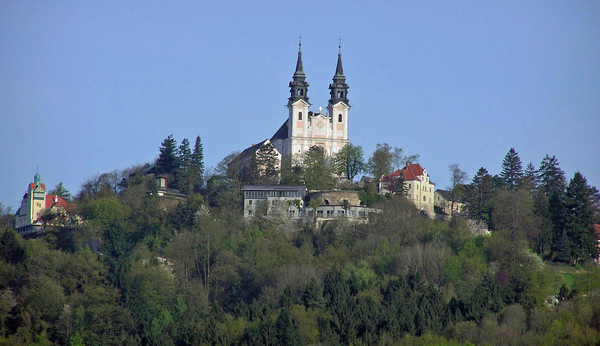
린츠에서 수 km를 지나 남부오스트리아 모스트피어텔은 “과일즙(most)”에서 이름을 땄으며, 알코올 또는 무알콜 배 사이다를 꼭 맛보길 권하는데, 많은 숙소나 가게에서 볼 수 있다. 강을 따라 더 내려가면, 입스강 11개의 발전소 중 하나가 있다. 이 발전소는 오스트리아 최초의 수력발전소인데, 오스트리아는 재생에너지의 98%를 주로 수력발전소에서 얻지만 풍력발전소도 많다.
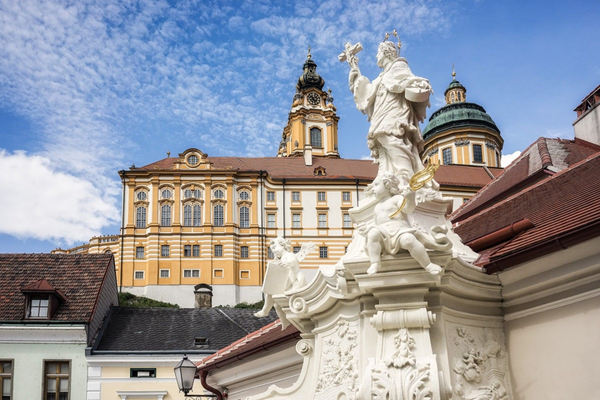
입스 가까이에서 강은 가장 아름다운 명소인 바하우계곡으로 들어선다. 이 계곡의 입구 언덕 위에 11세기에 지은 거대한 멜크수도원은 금 조각상도 많지만 중세 필사본이 있는 거대 도서관이 특히 인상적이다. 천장 프레스코와 붉은 대리석 벽의 바로크식 홀은 멋진 강 전망을 제공한다.

계곡은 그뤼너 벨트리너, 리슬링(달지 않은) 등 국제적으로 인정받는 고품질 와인이 나오는 계단식 포도원과 유네스코 문화유산인 달콤한 살구 재배지로 유럽에서 가장 멋진 풍경에 속한다.
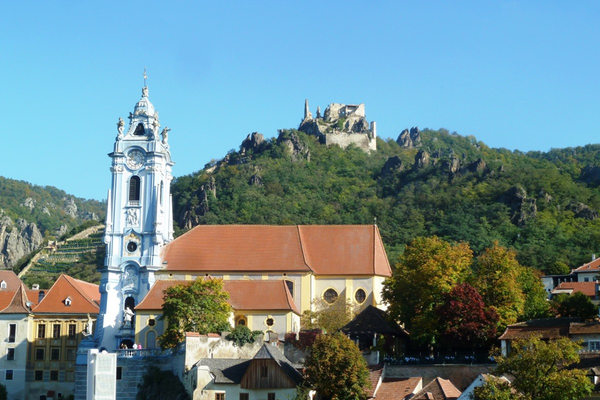
계곡을 따라 외국 방문객들에게 잘 알려진 마을로 영국의 리차드 왕이 붙잡힌 요새가 있는 뒤른슈타인이나 매년 1,000통의 포도를 수확할 수 있는 유명한 랜드마크 1,000 아이머베르크의 스피츠 등 역사적 장소가 있다.

또한, 이 계곡은 중세 다뉴브강과 다른 유럽 큰 강의 주변에서 인질을 잡고 몸값을 요구하는 납치 강도 귀족의 전통도 한편으로 유명했었다. 지금은 그런 시대는 끝났고, 가기 힘든 곳이지만 100년이 넘은 요새나 폐허, 성으로 남아 있다.
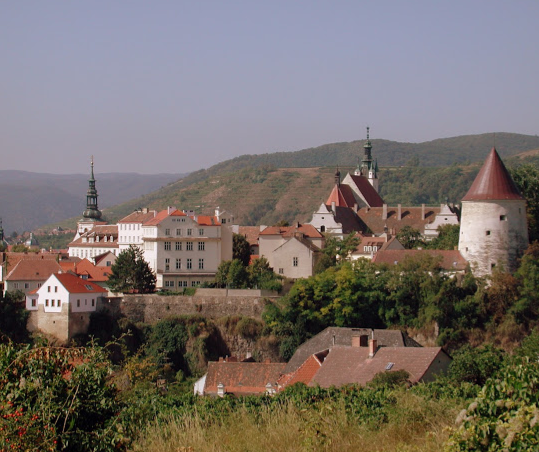
바하우 출구의 크렘스는 이 지역에서 가장 오래된 도시로 995년 오토 3세(위키피디아 980. 6-7월~1002. 1. 23, 신성로마제국의 황제. 오토 2세와 테오파누의 외아들)의 인증서에 처음 언급되었다.

Die Donau - part1 From Passau to Krems
The Danube is the second longest river in Europe and the most important waterway in Austria combined with a lot of historical and fascinating locations. The Danube is entering the present Austria in the north closed after the German city of Passau, were it starts the 260 km journey.

One of the exiting ways to discover the river Danube is using the bicycle another possible way is using ship which are regular operating. If so, the first interesting stop is the Abbey of Engelszell with its beautiful Rococo church and picturesque garden followed by the amazing Landmark, the double 180 degrees U turns of the river called “Die Schloegner Schlinge” (The Schloegner meander).
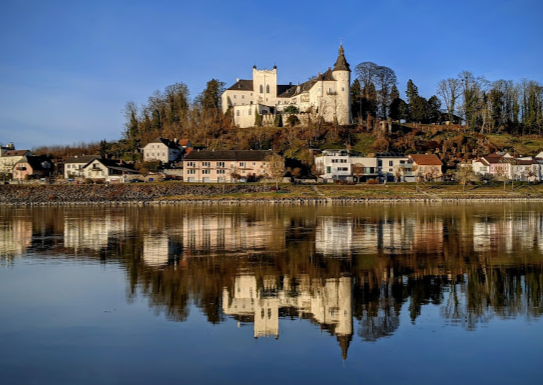
The next can be Ottensheim Castle overlooking the river, just above the market town Ottensheim with its charming 16th century houses. Ottensheim is not far away from the capitol of Upper Austria, Linz.
In the city of Linz a lot of interesting places can be found, from the historical center with its main square and Landstrasse, the Castle Museum, the Botanical Garden, the Musical Theatre at the Volksgarten, Lentos Museum, the Ars Electronica Center and last not least, the Poestlingberg (Mountain within the city).
Living the capital of Upper Austria after few kilometres reaching the Lower Austrian Mostviertel, a district named after “most”, the pear cider, an alcoholic or non-alcoholic drink which is a must for tasting. It is found in lots of local inns and supermarket – try it out!
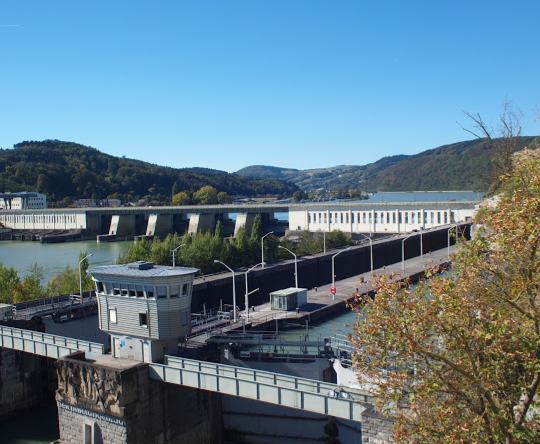
Following further down the river, one of the first every build River Power Station in Austria out of 11 in Ybbs can be seen. This power plant was one of the first hydro power plants in Austria, whereas Austria gets 98% of its energy from renewable energy source mainly Hydro Power Plants but a lot of Wind generators as well.
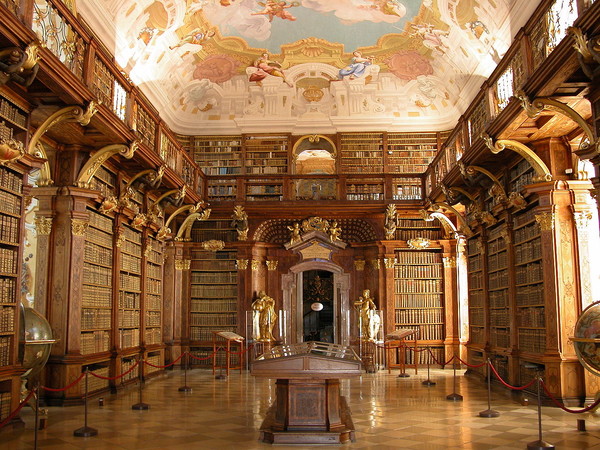
Closed to the village of Ybbs the Donau is entering the most beautiful showplaces along the Austrian part, the valley of the Wachau. The entrance to this Valley is marked by the 11th-century Melk Abbey, a vast monastery built high on the top of a hill. Many gold statuaries located in the Abbey Church, but the most impressive part of this abbey is the huge library which houses medieval manuscripts. The Marmorsaal (Marble Hall) is a baroque hall with a ceiling fresco and red marble walls and offer the visitors a wonderful view over the River.
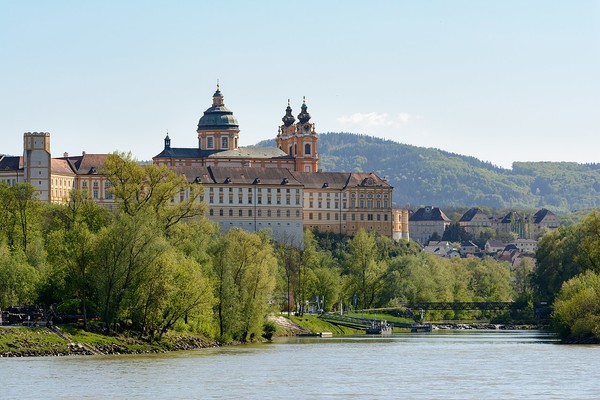
The valley itself is one of the most gorgeous landscape in Europe with its steep Wine Terraces, noble grapes and monumental international recognised Wines like Grüner Veltliner, Riesling(not sweet) as well as sweet Apricot plantations which is a cultural Heritage, recognised by UNESCO.
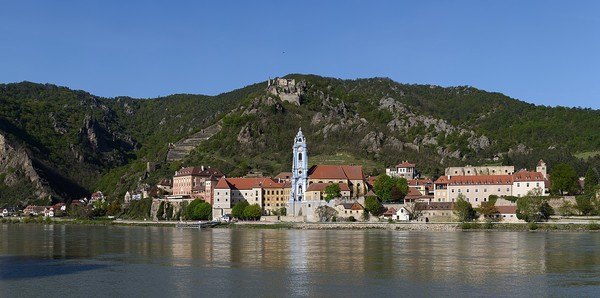
Along this gorgeous valley many historical market places can be found, one of them is very well know to the international visitors, the village of Dürnstein which was housing the fortress where King Richard of England was hold captured (See the legend of Robin Hood) or Spitz with its well-known small mountain the “1000 Eimer Berg” (The 1000 Bucket Mountain) which offer to harvest 1000 Bucket of grapes each year.
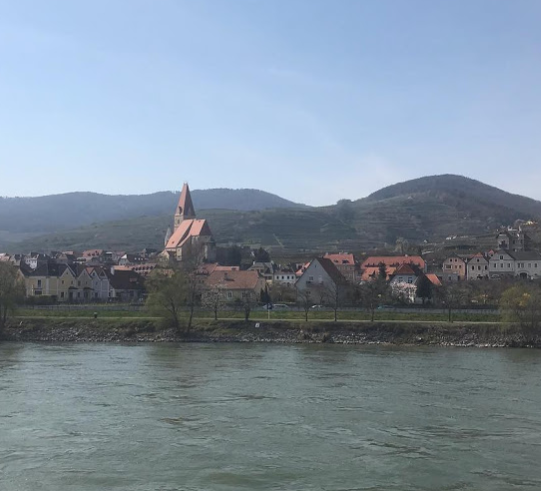
On the exit of the Wachau one the oldest City within this region can be seen, the city of Krems. Krems was first mentioned in 995AC in a certificate of Otto III (Wikipedia: Otto III (June/July 980 – 23 January 1002) was Holy Roman Emperor from 996 until his early death in 1002. A member of the Ottonian dynasty, Otto III was the only son of the Emperor Otto II and his wife Theophanu).
글 | 볼프강 슬라빈스키 Wolfgang Slawinski
서울명예시민, 한·오스트리아협회 부회장

